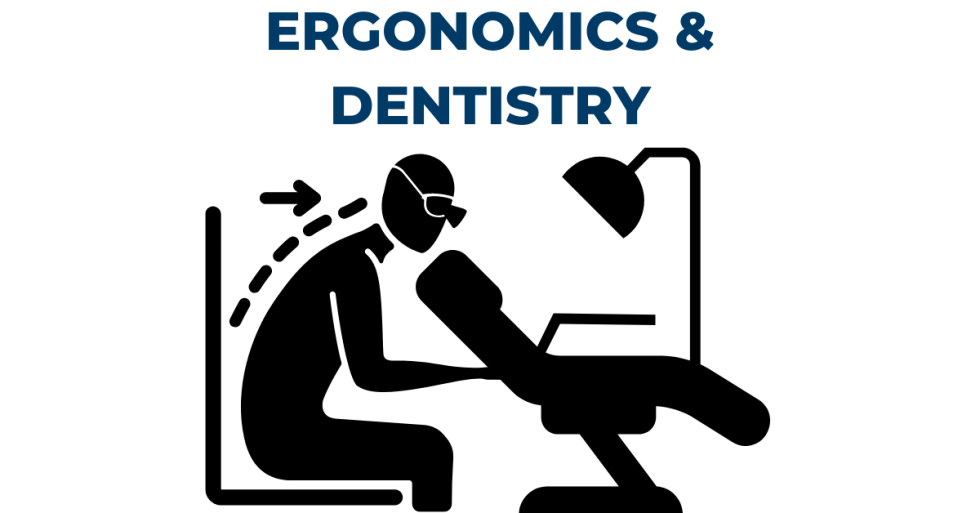Ergonomic Benefits of a Dental Microscope

As a dental professional, you’ve likely experienced the physical strain that’s inherent from a long day of caring for your patients. After all, you may be spending hours each day hunched over, in arched positions and/or making repetitive motions to get the perfect angle for performing your patient’s treatment. It’s a legitimate concern for your comfort now and your quality of life down the road.
When discussing dental microscopes, ergonomic advantages are not typically at the top of the list of features our prospective customers want to discuss. However, being able to maintain a proper ergonomic position while caring for your patients can take quite a bit of strain off your body and improve your long-term health. Already popular among endodontists, with growing demand from general practitioners, dental microscopes fill a specialized role to provide enhanced magnification during a wide variety of dental procedures while also improving your comfort.
For more information on how dental microscopes can be used in your practice, read the full article: Top 5 Uses for a Dental Microscope.
Today we’re going to explore some of the long-term benefits of ergonomics, compare the ergonomic benefits of microscopes to loupes and understand the training and calibration used to maximize the ergonomics of a microscope.
Long-term Benefits of Ergonomics
Your work causes the most strain when you’re holding uncomfortable positions for long periods of time. Over the past 25 years since we’ve started this business, we’ve promoted the long-term health benefits of dental microscopes, assisting the operator in maintaining optimum upright and balanced posture.
Rather than arching your back and neck, the dental microscope is positioned to have you looking straight ahead through binoculars in a comfortable, stress-free position. This, in turn, allows you to work longer periods without back and neck pain or fatigue.
Over the years, we’ve had numerous doctors come back and tell us how their microscope contributed to their long-term health. Many cited that the benefit of reduced stress on their joints provided by the use of a microscope extended the longevity of their careers, with others claiming they’ve also increased productivity after investing in a dental microscope.
For more information on the importance of ergonomics in the dental field, the VCU conducted a study: Work-Related Musculoskeletal Disorders Among Dentists and Orthodontists.
Comparing the Ergonomics of Loupes & Microscopes
If you’re already using magnification in your practice, it’s likely you’re either using loupes or a dental microscope. From doctors we speak with, both devices provide an ergonomic benefit over practicing dentistry with just the naked eye.
Loupes allow you to sit more upright by optimizing your viewing angle, which reduces strain on your neck, shoulders and back. Microscopes, however, take ergonomic advantages a bit further. Here’s how:
Wearing loupes adds weight to your head and neck, which also increases with higher magnification as well as with optional accessories such as a clip-on camera. Microscopes alleviate that weight entirely by allowing you, in a seated position, to look straight ahead through binoculars. Additionally, loupes feature fixed focus, so it can be difficult to maintain the correct distance for optimum focus if you move your head or turn your neck, which can cause additional strain.
Beyond back and neck strain, loupes can also cause eye strain. A concept that you may not be aware of is convergence of the eyes. With loupes, your eyes must look inward (converge) to focus on a close-up object – this often results in eye strain and headaches. In microscopes, the design of the optics allows you to look straight ahead with both eyes, reducing strain.
Training & Calibrating Your Microscope for Good Ergonomics
Like any other piece of dental equipment, there’s a learning curve to getting the most out of your dental microscope. If you and your staff have never been trained on a microscope or other forms of magnification, doctors we speak with suggest that you’ll feel more comfortable with using the equipment after the first month or so. If you’re transitioning to a microscope from other magnification sources, you’ll still experience a learning curve similar to initial attempts at indirect vision. Soon, with consistent use and training, utilizing magnification can become second nature.
Maximizing the ergonomic benefits of a dental microscope requires proper calibration and adjustment to your body’s natural position, as well as learning how to position your patients. Once you are trained on how to properly adjust the position of your microscope, you can sit completely upright, focusing all of your movements on just the fine motor functions of your forearms and hands. Once you get a microscope positioned correctly for your patient, you can make very small adjustments to keep the device in optimal focus, without having to raise or lower the entire scope.
Ergonomics Beyond the Microscope
Beyond the microscope itself, there are additional tools which help support your ergonomics while operating, creating more resting positions for greater comfortability. For example, a microsurgeon chair to your operatory offers support for the micro movements of your hands during procedural work. Adding additional ergonomic-focused equipment to your operatory will assist you in supporting the life and health of you and your practice.
More Questions? Chat with Us!
If neck and back pain are creeping into your daily workflow, you may be ready to consider adding a microscope to your practice. We are here to help! We’ve been helping dental practices for over 25 years see the benefits of high magnification through a dental microscope. Plus, we’re the only dental microscope manufacturer based in the US, where all of our assembly and manufacturing is done as well.
Please feel free to reach out at 800-861-3585 or by clicking the button below.


.png)
